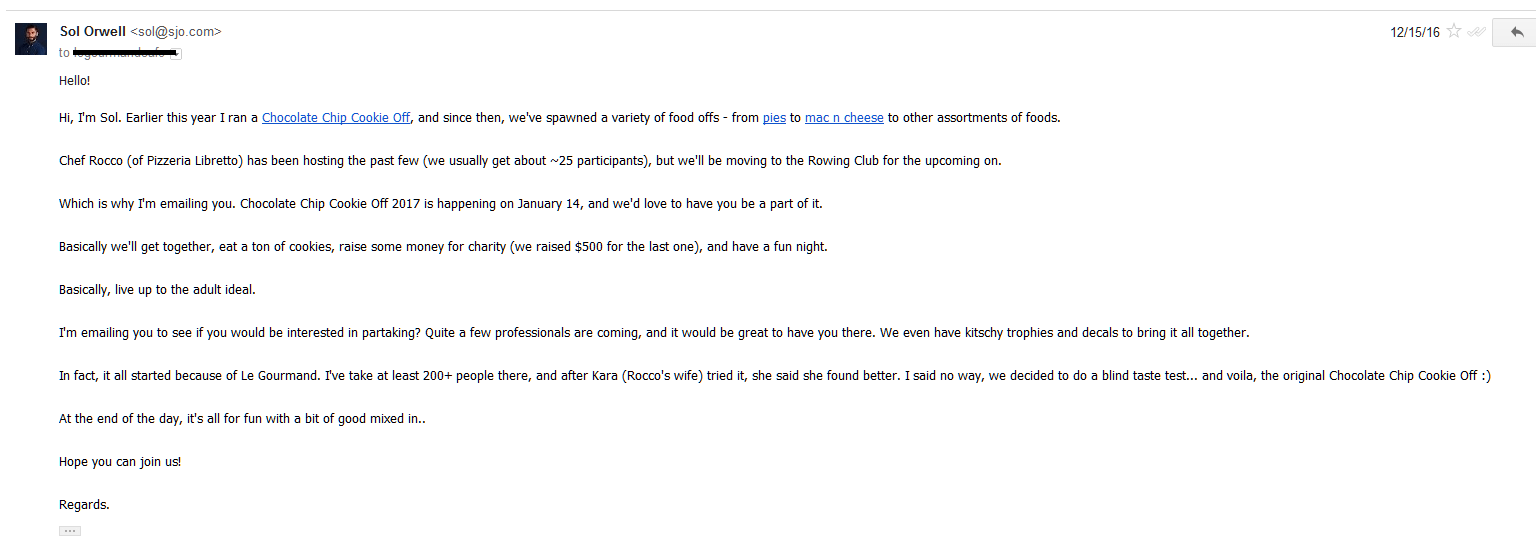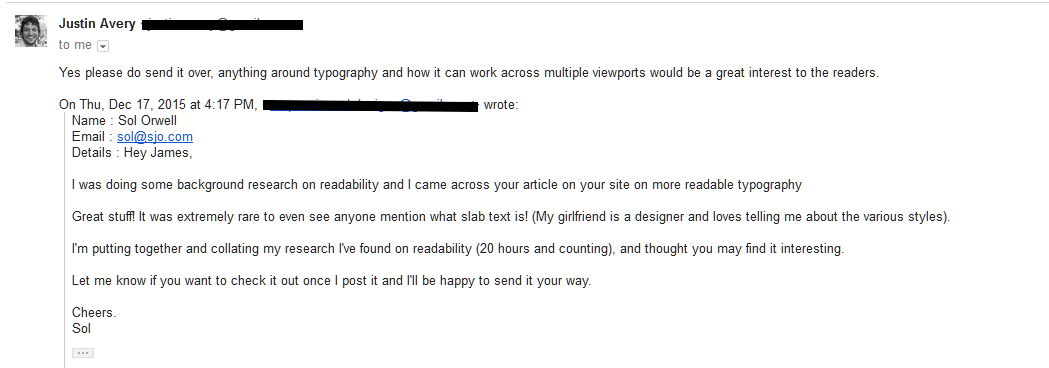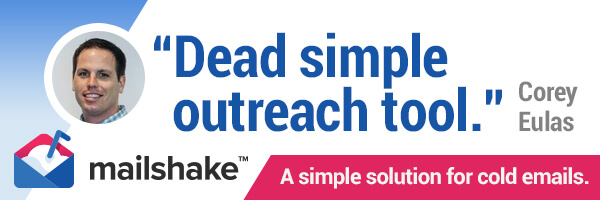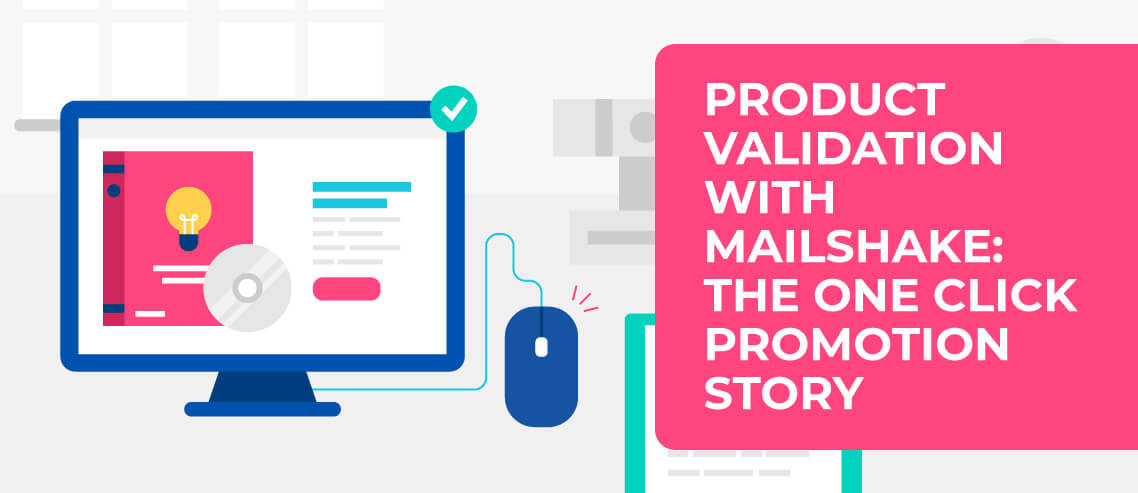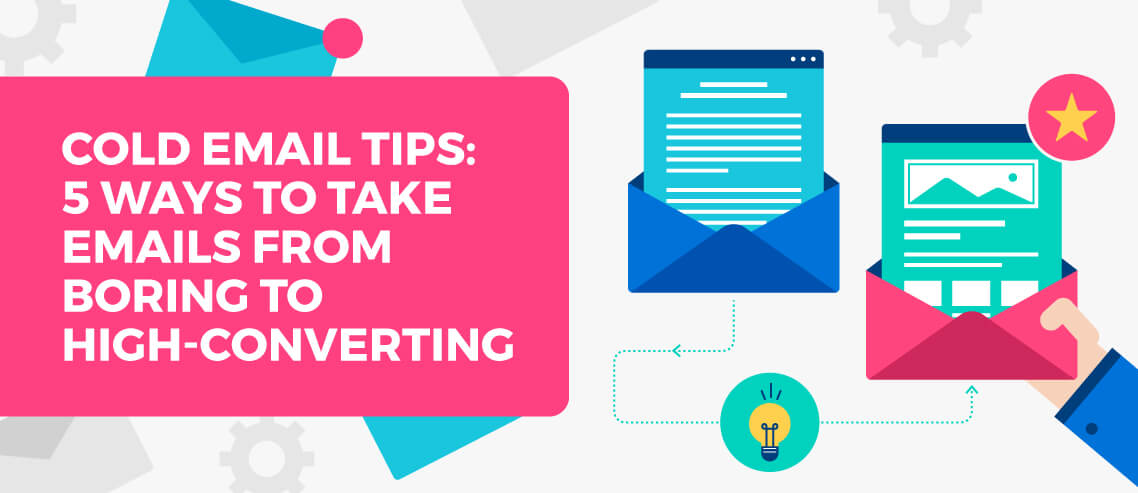How Sol Orwell Used Cold Outreach to Connect with People & Secure Guest Posts

Contents
This is the first in a series of many posts you’ll see appearing on this blog over the next few months. Each post is based on a chat I had recently with an expert. I’ll be talking about their approach to outreach and why it works, and I’ll be showing you some examples of their very best emails.
My goal is to get you thinking differently about how you approach your own outreach campaigns and offer up tried, tested, and proven-to-work processes that you can use to start sending better emails today.
This first post is based on my chat with Sol Orwell. He’s a serial-turned-semi-retired entrepreneur who’s best known as the co-founder of Examine, and he’s got some serious skills when it comes to writing outreach emails.
If that’s not enough to inspire you, he’s also known as the guy who dropped a lot of pounds (and kept them off) all while eating cookies (seriously – how can you not admire that?)
Of course, what I really wanted to know is what Sol does that makes his outreach so effective, so I asked him.
This is what I learned.
Sol’s Approach
Some people treat outreach as a numbers game. When I started this series of posts I didn’t entirely disagree. The more people you contact, the bigger the pool of people that could potentially respond. That’s simple math…
…isn’t it?
Few people would disagree that personalizing a cold outreach email is really important, but what criteria do you need to hit in order to consider an email “personalized”? And what’s your limit?
When do you say “enough” to personalizing an email to free up time to send more emails?
It’s a question I’ve been asked and that I’ve asked myself. It’s always felt like there’s a need to strike a balance between crafting a bespoke email and still having a shot at winning the numbers game.
But Sol’s adopted a pretty different approach to cold emails, and after hearing how effective it is, I have to be honest: I can’t really argue with him.
Sol has a unique philosophy on writing and sending cold emails.
How he thinks about cold email
A lot of people think of cold email in terms of how it will help them – how it will impact their business. It’s a necessary part of what they do, but it’s not necessarily something they want to do.
It’s simply a tool.
Sol sees cold email quite differently. He sees it as a means of connecting with people. His goal is to show the people he contacts how he can add value to them.
He also looks at the long-term benefits of cold outreach – something I think many marketers overlook completely.
Great marketers don’t just think of the emails they’re sending as a way to get a link or a sale right now. They’re also thinking about future wins that can result from taking the time to actually talk to people – to get to know them as real-life, walking, talking human beings – not as people who are there to serve one purpose and then disappear.
This is something that has paid off for me many times, and I wasn’t surprised to hear it’s worked for Sol, too.
Once when he was promoting a post on readability (you’ll hear more about this one shortly) he contacted Joel Falconer (who’s currently working as managing editor of SitePoint). When Joel replied, he said he liked Sol’s style, and asked him to write a piece for SitePoint.
These sorts of opportunities can and do arise from cold emailing, but usually only when you’re treating it as a long-term strategy – not just as a way to get quick wins.
How he decides who to contact
Sol’s picky about who he approaches. Before deciding whether or not to email someone, he takes the time to read some of their content. He checks out their writing style and looks them up on social media. If something doesn’t feel “right,” if he doesn’t feel he’d be able to connect with this person naturally, he doesn’t contact them.
I know a lot of marketers will add anyone with a loose link to what they’re trying to promote to their outreach list. It’s the “spray and pray” approach, and while it can work – to an extent – it’s rarely as effective as creating a small but super-qualified list of prospects that you actually care about talking to and have the time to email personally and properly.
How he writes his emails
This is something that really stood out for me – unlike most marketers (including myself), Sol doesn’t use templates when writing cold emails.
He follows a general structure, but beyond that, every email he sends is written from scratch.
While doing this, he’ll tailor his emails to each recipient’s own writing style. If their writing style is “formal and proper,” Sol will emulate that. If it’s informal or crude, same thing.
What’s more, he’s aiming to make a personal, not professional, connection with each prospect. He’ll find shared interests or common ground to comment on, and use this to start a conversation that goes beyond what he and his contact can do for each other professionally.
Let’s see a few of these things in practice by taking a look at some emails he’s sent.
The Cookie Off
Two things I like about Sol and identify with are his charitable nature and his love of food. Something I admire about Sol is how he’s managed to combine these two passions into what he’s named “food-offs” – events that revolve around a group of foodies getting together to make, eat and rate food – all in the name of charity.
What’s not to like about that?
His most recent food-off, a “cookie-off,” was a far bigger success than expected. It raised $2500 for United Way ($1000 more than its target).
Twenty-seven bakers turned up to the event. Sol only knew five of them prior to it. The rest were there as a result this email:
So what’s so good about it?
- He gets straight to the point.
- He very quickly explains why he’s emailing and at the same time, demonstrates why he’s worth listening to.
- He legitimizes his pitch by dropping a couple of well-known names.
- He explains what’s in it for the recipient.
- He includes social proof.
Key Takeaways
- Don’t beat around the bush – get to the reason why you’re emailing as quickly as possible.
- Highlight what the recipient stands to gain from responding.
- Showcase your credibility – provide evidence of why your recipient should pay attention to what you have to say.
- If possible, include social proof. This could be recognizable names or a number (for example, let’s say you’re looking to land a guest posting spot – you could state how many people commented on another post you wrote, or how many times it was shared).
The Typography Post
At the end of 2015, Sol wrote an article about how typography – things like font size, color and line height – affect readability.
As part of his promotional strategy for the post, he sent around 70 cold emails. He got 52 responses.
That’s incredible.
LeadFuze claims that the average cold email campaign gets a response rate of less than 1%. Marketers who are getting response rates of 20% and 29% are writing posts about it.
Now, I’m not saying those guys aren’t doing something worth writing about. A one in five response rate is awesome. I’m just trying to put into perspective how impressive a 52 out of 70 response rate really is.
Here’s an example of one of the emails he sent:
So why, beyond what we’ve already covered above, did this email perform so well?
- He compliments the recipient’s work (and it doesn’t sound the least bit fake, like cold email compliments so often do).
- He provides proof that he’s actually read the content he found.
- He humanizes himself with a quick anecdote about his own life.
- He very quickly and casually explains why he’s emailing.
In fact, this email is so cleverly written that it almost sounds as if by having thought of him, Sol is actually doing Justin the favor.
Adopting a similar approach yourself can help to soften the blow of the “ask” and in turn, increase the number of people that respond.
It’s also worth noting what happened when Sol sent the post over to those who said they were interested in seeing it. He continued with the “softly-softly” approach and didn’t ask anyone to do anything with it. Despite this, the post was shared around 30 times on social media and generated somewhere between five and ten backlinks (it has even more today).
Key Takeaways
- Once again, get to the point as quickly as you can.
- Compliment your recipient, but only if it’s genuine – fake compliments, even in an email, are easy to see through.
- Read some of your recipient’s content and include evidence of that in your email – comment on it in a way that demonstrates you’ve read and understood the whole piece. Don’t just pick out and comment on a point made in the intro or conclusion.
- Demonstrate that you’re a real person with a comment about yourself that the recipient should be able to relate to.
The Ramit Sethi Guest Post
Ramit Sethi is one of the biggest names in entrepreneurship and leveraging the web to make money from home. You might think, then, that getting a post onto one of his sites would be the hard part, and the rest would be easy.
That wasn’t quite the case when Sol wrote a post about how to be productive on Fridays, for Sethi’s GrowthLab. He still had to outreach it, but thankfully he had an edge – Sethi’s name.
Let’s see the email and run through why it got results:
- He compliments their work (and provides context to add authenticity).
- He links what he’s promoting to a past post of the recipient’s.
- He name drops.
Sol is also, as we’ve seen with the previous example, following a two-step outreach process. He’s not just sending a link and hoping for the best. He’s trying to start a conversation.
Sol gave me an example of how promoting this particular post paid off – not because of the post itself (or the name drop) – but because of how he promoted it.
One of the guys at Lifehacker responded to Sol’s initial email, agreeing to take a look at the finished post. Unfortunately, after reading it, they figured it wasn’t quite a fit for Lifehacker – in its current state.
What they did like however, was his approach and his writing. On that basis, they worked with Sol to turn the content into a fit for Lifehacker’s audience.
Again, this is something that rarely, if ever, happens with the “spray and pray” approach. These opportunities are arising for Sol because of the time and effort he puts into contacting the right people in the right way.
Key Takeaways
- Again, compliment your recipient’s work in a genuine way.
- Highlight the relationship between what you’re promoting, and content your recipient has created previously.
- If possible, mention a recognizable name that’s played (or is playing) a part in what you’re promoting.
Before we wrap up, I want to make one final point.
Just because this approach works for Sol doesn’t mean it will work for you. One big, big reason Sol’s outreach gets such great results is because what he’s promoting is worth talking about.
You could write the greatest cold email the world has ever seen, but if what you’re promoting doesn’t match up to it, you’re probably wasting your time.
Another thing to take away from this – beyond researching each prospect properly and writing genuinely personalized emails – is to make a point of showing why someone should reply to your email over all the others they receive.
What makes you different? What credentials do you have that show you know what you’re talking about? And what’s in it for the recipient if they agree to your ask?
If you can combine a genuinely personalized email with proof you’re worth listening to and an ask that benefits your recipient as much as yourself, you’re going to start seeing better results from your cold emails – I practically guarantee it.
